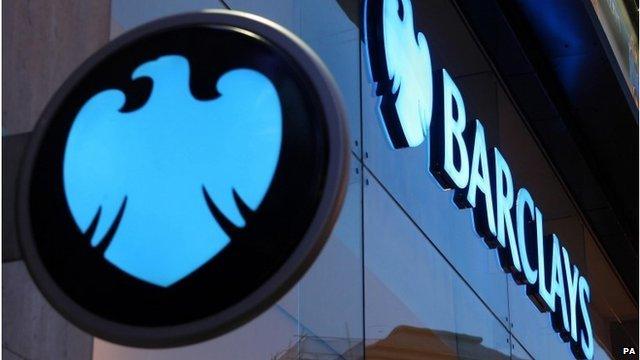Barclays set to slash jobs as investment bank shrinks
- Published
- comments

Barclays is expected to announce further job cuts on Thursday
The City on Thursday will be dominated by one question - how is Barclays going to cut costs in large parts of its struggling investment bank?
Well, it seems the answer is two-fold. First, cut jobs. Second, scrap large parts of the underperforming fixed income business - that's the part of the investment bank that rode the wave of debt corporates issued following the financial crisis and the collapse in equity prices.
In its strategy announcement, the market expects Barclays to say that the job cuts could be as high as 15,000 and certainly significantly above the 10,000 to 12,000 the bank has already announced it wants to cut this year.
A large proportion will be in the UK, as high as 70% of the roles.
Although the job losses will be mostly in the investment bank, Barclays' retail operation (that's its high street branches) will not be immune.
Ultimately, Mr Jenkins would like to see the global workforce of the bank fall over the next six years from 140,000 to 100,000.
This will help Barclays bring down its cost-to-income ratio, which is at present north of 60%, closer to 50%.
Branches pruned
Technological change (mobile banking for example) and the fact that far fewer people now use Barclays' branch network means that Mr Jenkins wants to cut there as well.
There are 1,600 branches now. Expect that figure to fall by 400 over the next few years, although I don't believe an announcement is imminent.
Cuts at the investment bank will be the main story on Thursday.
As I wrote on Tuesday when Barclays announced its first quarter results, it was not long ago when fixed income banking (selling debt products that pay a fixed amount over time) was all the rage.
Gorging over
Banks gorged themselves on the huge amounts of money (and profits) available as the bond market took off and mergers and acquisitions activity declined.
Well, that time has ended - and as the bond market slows banks like Barclays are feeling the pain.
Investment bank income was down 28% in the last quarter, in large part down to a 41% fall in fixed income.
The amount of capital - easily accessible funds - the bank needs to retain to support investment banking activity has also risen under the orders of the Bank of England.
The Bank of England has also demanded changes in the way fixed income is treated on the balance sheet, the so-called risk weighting, which has again increased costs.
Boosting returns
Bits of the investment bank that will be promoted include advisory work on the growing number of deals being done as economic confidence returns and equities which are looking more robust.
Although Mr Jenkins will be pleased that costs across the bank are falling (operating expenses decreased by £861m), he will be worried that return on equity in the investment bank is still below 7%.
Analysts estimate the "hurdle rate" (a satisfactory return given the activity) should be 11%.
Barclays is refusing to comment on Thursday's announcement.
But a well-placed source told me that the volatility in the fixed income market meant that a slow withdrawal was the best option.
Although there is speculation that Barclays may put its European continental businesses up for sale, I am told that they are not yet ready for the market and that any sale would be a "medium term" option.
Mr Jenkins needs to convince shareholders that he is as comfortable running an investment bank as he is a retail bank (which is where his expertise lies).
Thursday's strategy review will be his chance to show that he does.
- Published6 May 2014

- Published24 April 2014

- Published18 March 2014
